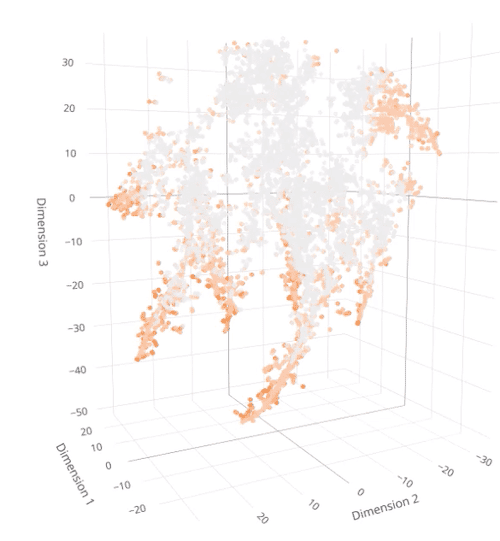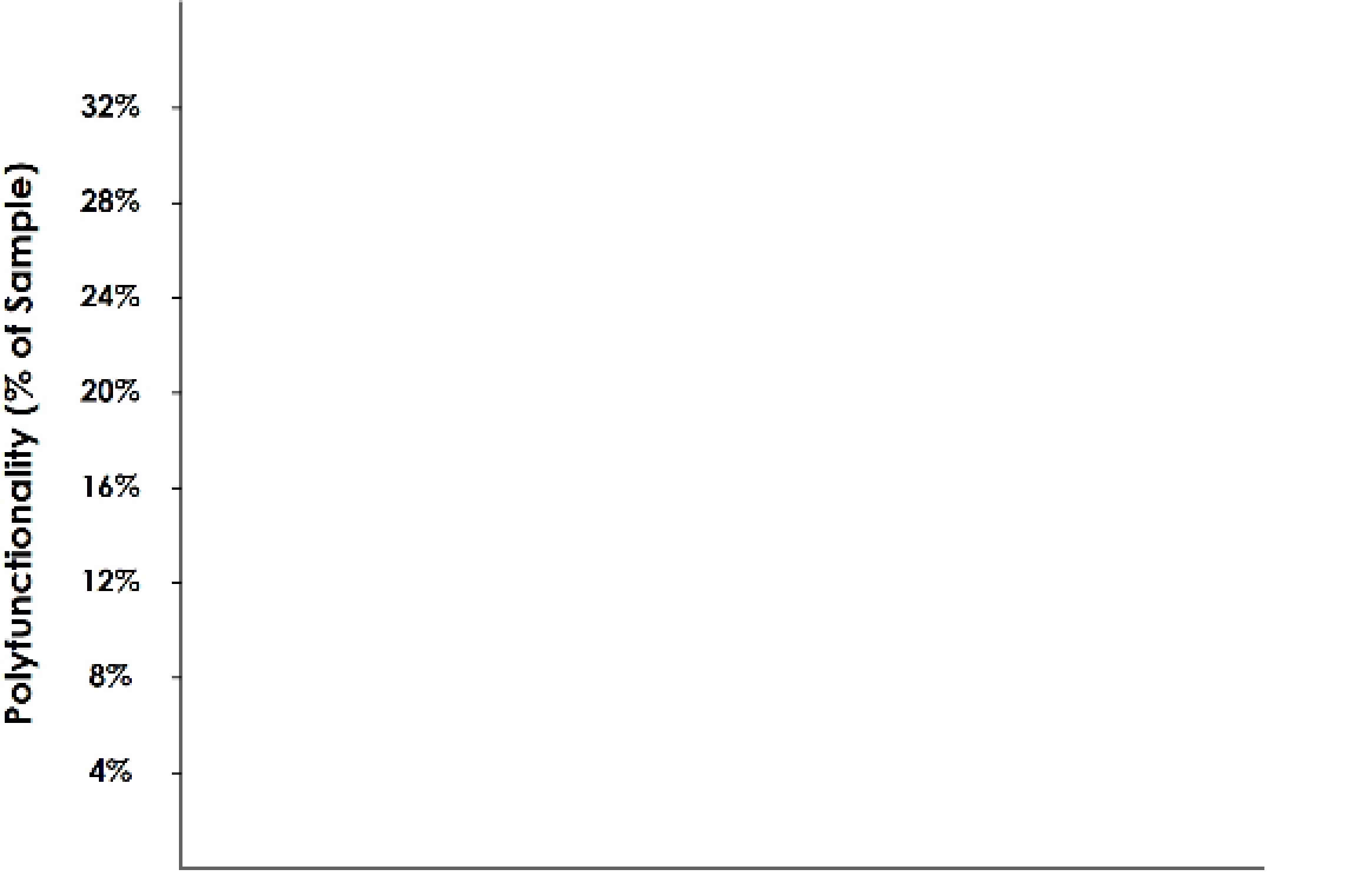
This demo data set shows six CD19 CAR-T cell products from three responders and three non-responders.
-
Non-Responders
-
Responders

This demo data set shows six CD19 CAR-T cell products from three responders and three non-responders.
There are clear functional differences between the responders and non-responders.
But what are those differences?
Find out in the next t-SNE view.
-
Non-Responders
-
Responders

We can see that the responders have the presence of highly polyfunctional CAR-T cells.
These highly polyfunctional cells have correlated to anti-tumor activity, persistence, and durability in a variety of studies.
What are the biological drivers of this increased polyfunctionality?
Find out in the next view.
-
5+
-
4
-
3
-
2
-
1
-
0

The highly polyfunctional subsets of CAR-T cells in the responder groups are driven by a variety of cytokines.
As shown in this view, we can see that the stimulatory, effector, and chemoattractive cytokines play a dominant role.
-
Inflammatory
-
Regulatory
-
Chemoattractive
-
Stimulatory
-
Effector
-
Non-secretor

Here you can see that the Responders have more polyfunctional cells than the Non-Responders.



It is clear that the percentage of polyfuctional cells in the Responders is much higher than in the Non-Responders.
-
2 cytokines
-
3 cytokines
-
4 cytokines
-
5+ cytokines

It is clear that the percentage of polyfuctional cells in the Responders is much higher than in the Non-Responders
-
2 cytokines
-
3 cytokines
-
4 cytokines
-
5+ cytokines




Responders have higher polyfunctional immune response driven by primarily stimulatory and effector cytokines

-
EffectorGranzyme B, IFN-g, MiIP-1a, Perforin, TNF-a, TNF-b
-
StimulatoryGM-CSF, IL12, IL-15, IL-2, IL-21, IL-5, IL-8, IL-9
-
ChemoattractiveCCL-11, IP-10, MIP-1b, RANTES
-
RegulatoryIL-10, IL-13, IL-22, IL-4, TGF-b1, sCD137, sCD40L
-
InflammatoryIL-17A, IL-17F, IL-1b, IL-6, MCP-1, MCP-4

-
EffectorGranzyme B, IFN-g, MiIP-1a, Perforin, TNF-a, TNF-b
-
StimulatoryGM-CSF, IL12, IL-15, IL-2, IL-21, IL-5, IL-8, IL-9
-
ChemoattractiveCCL-11, IP-10, MIP-1b, RANTES
-
RegulatoryIL-10, IL-13, IL-22, IL-4, TGF-b1, sCD137, sCD40L
-
InflammatoryIL-17A, IL-17F, IL-1b, IL-6, MCP-1, MCP-4
Responders have higher polyfunctional immune response driven by primarily stimulatory and effector cytokines

-
EffectorGranzyme B, IFN-g, MiIP-1a, Perforin, TNF-a, TNF-b
-
StimulatoryGM-CSF, IL12, IL-15, IL-2, IL-21, IL-5, IL-8, IL-9
-
ChemoattractiveCCL-11, IP-10, MIP-1b, RANTES
-
RegulatoryIL-10, IL-13, IL-22, IL-4, TGF-b1, sCD137, sCD40L
-
InflammatoryIL-17A, IL-17F, IL-1b, IL-6, MCP-1, MCP-4
Responders have higher polyfunctional immune response driven by primarily stimulatory and effector cytokines

The PSI metric helps you predict that the patients in Therapy 1 are going to respond better to this particular therapy than Therapy 2 patients.






























